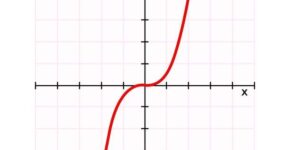Examples of Laurent Series Expansion
1.लौराँ श्रेणी प्रसार के उदाहरण का परिचय (Introduction to Examples of Laurent Series Expansion),सम्मिश्र विश्लेषण में टेलर श्रेणी प्रसार (Taylor Series Expansion in Complex Analysis):
लौराँ श्रेणी प्रसार के उदाहरण (Examples of Laurent Series Expansion) के इस आर्टिकल में लौराँ एवं टेलर श्रेणी की सहायता से कुछ विशिष्ट फलनों के प्रसार ज्ञात करना सीखेंगे।
आपको यह जानकारी रोचक व ज्ञानवर्धक लगे तो अपने मित्रों के साथ इस गणित के आर्टिकल को शेयर करें।यदि आप इस वेबसाइट पर पहली बार आए हैं तो वेबसाइट को फॉलो करें और ईमेल सब्सक्रिप्शन को भी फॉलो करें।जिससे नए आर्टिकल का नोटिफिकेशन आपको मिल सके।यदि आर्टिकल पसन्द आए तो अपने मित्रों के साथ शेयर और लाईक करें जिससे वे भी लाभ उठाए।आपकी कोई समस्या हो या कोई सुझाव देना चाहते हैं तो कमेंट करके बताएं।इस आर्टिकल को पूरा पढ़ें।
Also Read This Article:- Expand in Laurent Series Expansion
2.लौराँ श्रेणी प्रसार के उदाहरण (Examples of Laurent Series Expansion):
Example:1.टेलर श्रेणी के रूप में f(z)=\frac{z-1}{z+1} का प्रसार करें,(i)z=0 (ii)z=1 (iii) 1 <|z|<\infty डोमेन में लौराँ की श्रेणी
(Expand f(z)=\frac{z-1}{z+1} as a Taylor’s, series about (i)z=0 (ii)z=1 (iii) its Laurent’s series in the domain 1 <|z|<\infty)
Solution: (i) f(z)=\frac{z-1}{z+1} \\ \Rightarrow f(z)=1-\frac{2}{z+1} \cdots(1) \\ \Rightarrow f(z)=1-2(1+z)^{-1} \\ \Rightarrow f(z)=1-2 \overset{\infty}{\underset{n=0}{\sum}} (-1)^n z^n
(ii)माना \phi(z)=\frac{1}{z+1} \\ \phi^n(z)=\frac{(-1)^n n!}{(z+1)^{n+1}}
यदि a_n=\frac{\phi^{(n)}(1)}{n!} तब a_n=\frac{(-1)^n}{(1+1)^{n+1}} \\ \Rightarrow a_n=\frac{(-1)^n}{2^{n+1}} \\ \phi(z)=\overset{\infty}{\underset{n=0}{\sum}} a_n(z-1)^n=\overset{\infty}{\underset{n=0}{\sum}} \frac{(-1)^n(z-1)^n}{2^{n+1}}
(1) व (2) से:
f(z)=1-\overset{\infty}{\underset{n=0}{\sum}} \frac{(-1)^n(z-1)^n}{2^n}
यह z=1 के सामीप्य में टेलर प्रसार है।
(iii) f(z)=1-\frac{2}{z+1} \\=1-\frac{2}{z}\left(1+\frac{1}{z}\right)^{-1} \\ \Rightarrow f(z)=1-\frac{2}{z} \overset{\infty}{\underset{n=0}{\sum}} (-1)^n \frac{1}{z^n}
Example:2.फलन f(z)=\frac{1}{\left(z^2-4\right)(z+1)} का लौराँ श्रेणी ज्ञात कीजिए,जो क्षेत्र 1< |z|< 2 के लिए वैध है।
(Find Laurent’s series of the function f(z)=\frac{1}{\left(z^2-4\right)(z+1)} valid in the region 1< |z|< 2 )
Solution: f(z)=\frac{1}{\left(z^2-4\right)(z+1)} \\ =\frac{1}{(z-2)(z+2)(z+1)}
आंशिक भिन्नों में वियोजन करने पर:
\Rightarrow f(z)= \frac{1}{12(z-2)}+\frac{1}{4(z+2)}-\frac{1}{3(z+1)} \\ =-\frac{1}{24}\left(1-\frac{z}{2}\right)^{-1}+\frac{1}{8}\left(1+\frac{z}{2}\right)^{-1}-\frac{1}{3 z}\left(1+\frac{1}{z}\right)^{-1} \\ \Rightarrow f(z)=-\frac{1}{24} \overset{\infty}{\underset{n=0}{\sum}} \left(\frac{z}{2}\right)^n+\frac{1}{8} \overset{\infty}{\underset{n=0}{\sum}} (-1)^n\left(\frac{z}{2}\right)^n-\frac{1}{3 z} \overset{\infty}{\underset{n=0}{\sum}} \frac{(-1)^n}{z^n}
Example:3.टेलर श्रेणी \sin z में z=\frac{\pi}{4} के सामीप्य में प्रसार करें।
(Expand \sin z in a Taylor’s series about z=\frac{\pi}{4} )
Solution: f(z)=\overset{\infty}{\underset{n=0}{\sum}} a_n\left(z-\frac{\pi}{4}\right)^n \cdots(1)
जहाँ a_n=\frac{f^n\left(\frac{\pi}{4}\right)}{n!} \cdots(2) \\ f(z)=\sin z=f^n(z)=\sin \left(z+\frac{n \pi}{2}\right) \\ \therefore f^n\left(\frac{\pi}{4}\right)=\sin \left(\frac{\pi}{4}+\frac{n \pi}{2}\right)
उपर्युक्त मान (1) में रखने पर:
f(z)=\overset{\infty}{\underset{n=0}{\sum}} \sin \left(\frac{\pi}{4}+\frac{n \pi}{2}\right) \frac{\left(z-\frac{\pi}{4}\right)^3}{n!}
Example:4(a).z=1 के सामीप्य में टेलर श्रेणी का \frac{1}{z} का प्रसार करें
(b)वलय 0<\left|z-\frac{\pi}{4}\right|<1 में फलन f(z)=\frac{\sin z}{\left(z-\frac{\pi}{4}\right)^3} के लौराँ श्रेणी का निर्धारण कीजिए।
((a)Expand \frac{1}{z} as a Taylor’s series about z=1.)
((b)Determine Laurent’s expansion of the function f(z)=\frac{\sin z}{\left(z-\frac{\pi}{4}\right)^3} in the annulus 0<\left|z-\frac{\pi}{4}\right|<1 .)
Solution:(a). f(z)=\frac{1}{z}
z=1 के सामीप्य में टेलर प्रसार के लिए
f(z)=\overset{\infty}{\underset{n=0}{\sum}} a_n(z-1)^n जहाँ a_n=\frac{f^{(n)}(1)}{n!} \\ f^n(z)=\frac{(-1)^n n!}{z^{n+1}} \\ \Rightarrow f^{(n)}(1)=\frac{(-1)^n n!}{(1)^{n+1}}\left[\because a_n=(-1)^n\right] \\ \therefore f(z)=\overset{\infty}{\underset{n=0}{\sum}} (-1)^n(z-1)^n
(b)f(z)=\frac{\sin z}{\left(z-\frac{\pi}{4}\right)^3} \cdots(1) \\ z=\frac{\pi}{4} के सामीप्य में लौराँ प्रसार के लिए
f(z)=\overset{\infty}{\underset{n=0}{\sum}} a_n\left(z-\frac{\pi}{4}\right)^n+\overset{\infty}{\underset{n=1}{\sum}} \frac{b_n}{\left(z-\frac{\pi}{4}\right)^n} \cdots(2)
जहाँ a_{n}=\frac{1}{2 \pi i} \int_c \frac{f(z) d z}{\left(z-\frac{\pi}{4}\right)^{n+1}} \ldots(3)
तथा b_n=a_{(-n)} \\ C ,\left|z-\frac{\pi}{4}\right|=1 है।
\therefore z-\frac{\pi}{4}=e^{i \theta} \Rightarrow d z=i \cdot e^{i \theta} d \theta
(1) से :
f(z)=\frac{\sin \left(\frac{\pi}{4}+e^{i \theta}\right)}{e^{i 3 \theta}}
ये मान (3) में रखने पर:
a_n=\frac{1}{2 \pi i} \int_C \frac{\sin \left(\frac{\pi}{4}+\cos \theta+i \sin \theta\right)i e^{i \theta} d \theta}{e^{i 3 \theta}(e^{i \theta})^{n+1}} \\ =\frac{1}{2 \pi} \int_C \sin \left(\frac{\pi}{4}+\cos \theta+i \sin \theta\right) e^{-i \theta(n+3)} d \theta \\ =\frac{1}{2 \pi} \int_C [\sin \phi \cdot \cosh (\sin \theta)+i \cos \phi \cdot \cosh (\sin \theta) \cdot][\cos m \theta-i \sin m \theta] \cdot d \theta
जहाँ m=n+3, \phi=\frac{\pi}{4}+\cos \theta
इस प्रकार \phi_n=\frac{1}{2 \pi} \int_0^{2 \pi}\left[\sin \phi \cdot \cosh (\sin \theta) \cos (m \theta)+\cos \phi \sinh (\sin \theta) \sin (m \theta) d \theta \right] -i I_1
जहाँ I_1=\frac{1}{2 \pi} \int_0^{2 \pi} F(\theta) d \theta
तथा F(\theta)=\sin \phi \cdot \sin( m \theta) \cdot \cosh (\sin \theta)- \cos \phi \cdot \cos (m \theta) \cdot \cosh (\sin \theta)
यह सिद्ध किया जा सकता है कि
F(2 \pi-\theta)=-F(\theta) \\ \therefore I_1=\frac{1}{2 \pi} \int_0^{2 \pi} F(\theta) d \theta=0
अतः a_n=\frac{1}{2 \pi} \int_0^{2 \pi}[\sin \phi \cosh (\sin \theta) \cdot \cos (m \theta) +\cos \phi \cdot \sinh (\sin \theta) \cdot \sin (m \theta) d \theta \cdots(4)
जहाँ \phi=\frac{\pi}{4}+\cos \theta, m=n+3 \\ b_n=a_{(-n)}
लौराँ श्रेणी (2) द्वारा दी गई है और व के गुणांक (4) द्वारा दिए गए हैं।
Example:5.दर्शाइए कि |a|<|z|<|b| द्वारा परिभाषित वलय में फलन \left[\frac{b z}{(z-a)(b-z)}\right]^{\frac{1}{2}} का विस्तार निम्न रूप में किया जा सकता है: S_0 + \sum S_n \left(\frac{a^n}{z^n}+\frac{z^n}{b^n}\right)
जहाँ S_n=\overset{\infty}{\underset{i=0}{\sum}} \frac{1 \cdot 3 \cdot 5 \ldots(2 l-1)(1 \cdot 3 \cdot 5 \cdots}{z^{2l+n} l!\frac{(2 l+2 n-1)}{(l+n)!}} \left(\frac{a}{b}\right)^l
Solution: माना f(z)=\left[\frac{b z}{(z-a)(b-z)}\right]^{\frac{1}{2}} दिया हुआ फलन z=0 के अतिरिक्त सर्वत्र विश्लेषिक है इसलिए इसे में लौराँ श्रेणी में प्रसार किया जा सकता है जहाँ r बहुत छोटा है और R बहुत बड़ा है परन्तु परिमित है।
\therefore f(z)=\overset{\infty}{\underset{n=0}{\sum}} a_n z^n+\overset{\infty}{\underset{n=1}{\sum}} b_n z^{-n}
जहाँ a_n=\frac{1}{2 \pi i} \int_c \frac{f(z)}{z^{n+1}} d z
तथा b_n=\frac{1}{2 \pi i} \int_c z^{n-1} f(z) d z
जबकि |a|<|z|<|b| इसलिए हम लिख सकते है
f(z)=\left[\frac{1}{\left(1-\frac{z}{b}\right)\left(1-\frac{a}{z}\right)}\right]^{\frac{1}{2}} \\ =\left(1-\frac{z}{b}\right)^{-\frac{1}{2}}\left(1-\frac{a}{z}\right)^{-\frac{1}{2}} \\ =\overset{\infty}{\underset{m=0}{\sum}} \frac{1.3 .5 \ldots(2 m-1)}{2^m m!}\left(\frac{z}{b}\right)^m \cdot \overset{\infty}{\underset{l=0}{\sum}} \frac{1 \cdot 3 \cdot 5 \ldots(2 l-1)}{z^l l!} \cdot\left(\frac{a}{z}\right)^l
अब a_n=\frac{1}{2 \pi i} \int_c \frac{f(z)}{z^{n+1}} d z \\ =\frac{1}{2 \pi i} \int_C\left[\overset{\infty}{\underset{m=0}{\sum}} \frac{1 \cdot 3 \cdot 5 \ldots (2 m-1)}{2^m \cdot m!} \cdot \frac{z^m}{b^m} \overset{\infty}{\underset{l=0}{\sum}} \frac{1 \cdot 3 \cdot 5 \cdots(2 l-1)}{2^l \cdot l!} \cdot \frac{a^l}{z^l}\right] \frac{d z}{z^{n+1}} \\ =\frac{1}{2 \pi i} \int_0^{2 \pi}\left[\overset{\infty}{\underset{n=0}{\sum}} \frac{1 \cdot 3 \ldots (2m-1)}{z^m \cdot m!} \cdot \frac{R^m e^{i m \theta}}{b^m} \overset{\infty}{\underset{i=0}{\sum}} \frac{1 \cdot 3 \ldots (2l-1)}{2^l \cdot l!} \cdot \frac{a^l}{R^l e^{i l \theta}}\right] \frac{R i e^{i \theta}d \theta}{R^{m+1} e^{i(n+1) \theta}}
दायी तरफ का समाकल निम्न रूप का है \int_0^{2 \pi} e^{i(m-l-n) 0} d \theta जो (m-l+n) के अलावा समाकल हो जाता है |
माना C वृत्त है जो द्वारा परिभाषित है तब
\therefore a_n =\frac{1}{2 \pi} \int_0^{2 \pi}\left[\sum \frac{1 \cdot 3 \cdot 5 \ldots (2l+2n-1)}{2^{l+n} \cdot (l+n)!} \cdot \frac{1}{b^{l+n}} \cdot \frac{1 \cdot 3 \cdot 5 \ldots (2 l-1) a^l}{2^l \cdot l!}\right] d \theta \\ =\frac{1}{b^n 2 \pi} \int_0^{2 \pi} S_n d \theta=\frac{S_n}{b_n}
विशेष a_0=S_0
इसी प्रकार b_n=a_n^n S_n
इस प्रकार f(z)=\sum a_n z^n+\sum b_n \bar{z}^n \\ =a_0+ \overset{\infty}{\underset{n=1}{\sum}} \left(a_n z^n+b_n \bar{z}^n\right) \\ =S_0+\overset{\infty}{\underset{n=1}{\sum}} S_n \left(\frac{z^n}{b^n}+\frac{a^n}{z^n}\right)
Example:6. प्रदर्शित करो कि e^{\frac{u}{z}+vz}=\overset{\infty}{\underset{n=0}{\sum}} a_n z^n+\overset{\infty}{\underset{n=1}{\sum}} b_n \bar{z}^n
जहाँ a_n=\frac{1}{2 \pi} \int_0^{2 \pi} \operatorname{exp} \left[ (u+v) \cos \theta \right] \cos \left[ (u-v) \sin \theta-n \theta \right] d \theta
तथा b_n=\frac{1}{2 \pi} \int_0^{2 \pi} \operatorname{exp} \left[ (u+v) \cos \theta \right] \cos \left[ (u-v) \sin \theta-n \theta \right] d \theta
Solution: माना f(z)=e^{\frac{u}{z}+v z} दिया हुआ फलन f(z), z=0 के अतिरिक्त सर्वत्र विश्लेषिक है इसलिए इसे क्षेत्र r < |z| < R में लौराँ श्रेणी में प्रसार किया जा सकता है जहाँ r बहुत छोटा है और R बहुत बड़ा है परन्तु परिमित है।
\therefore f(z)=\overset{\infty}{\underset{n=0}{\sum}} a_n z^n+\overset{\infty}{\underset{n=1}{\sum}} b_n \bar{z}^{2}
जहाँ a_n=\frac{1}{2 \pi i} \int_C \frac{f(z)}{z^{n+1}} d z, b_n=\frac{i}{2 \pi i} \int_C \frac{f(z)}{z^{n-1}} d z
तथा C कोई वृत्त है जिसका केन्द्र मूलबिन्दु है।
माना C वृत्त है |z|=1
z=e^{i \theta}, d z=i e^{i \theta} d \theta
अब a_n=\frac{1}{2 \pi i} \int_0^{2 \pi} \frac{\exp \left(u e^{-i \theta}+v e^{i \theta}\right)}{e^{i(n+1) \theta}} i e^{i \theta} d \theta \\ =\frac{1}{2 \pi} \int_0^{2 \pi} e^{(u+v) \cos \theta} e^{i[(v-u) \sin \theta-n \theta]] } d \theta \\ =\frac{1}{2 \pi} \int_0^{2 \pi} e^{(u-v) \cos \theta} [\cos \theta[(v-u) \sin \theta-n \theta] +i \sin \left[ (v-u) \sin \theta-n \theta \right] d \theta \\ =\frac{1}{2 \pi} \int_0^{2 \pi} e^{(u+v) \cos \theta} \cos \left[(v-u) \sin \theta-n \theta)\right] d \theta
निश्चित समाकलन के गुणधर्म से द्वितीय समाकल शून्य हो जाता है।
b_n=\frac{1}{2 \pi i} \int_0^{2 \pi} e^{\left(u e^{-i \theta}+v e^{i \theta}\right)} e^{i(n-1) \theta} \cdot i e^{i \theta} d \theta \\ = \frac{1}{2 \pi} \int_0^{2 \pi} e^{(u+v) \cos \theta} e^{-i[(u-v) \sin \theta-n \theta]} d \theta \\ =\frac{1}{2 \pi} \int_0^{2 \pi} e^{(u+v) \cos \theta}[\cos (u-v) \sin \theta-n \theta] -i[\sin (u-v) \sin \theta-n \theta]] d \theta \\ =\frac{1}{2 \pi} \int_0^{2 \pi} e^{(u+v) \cos \theta} \cos\left[ (u-v) \sin \theta-n \theta) d \theta \right]
निश्चित समाकलन के गुणधर्म से द्वितीय समाकल शून्य हो जाता है।
Example:7. दर्शाइए कि यदि c>0 तब e^{z+ \frac{c^3}{2 z^2}}=\overset{\infty}{\underset{n=0}{\sum}} a_n z^n
जहाँ a_n=\frac{e^{-\frac{c}{2}}}{2 \pi c^n} \int_0^{2 \pi} e^{c\left(\cos \theta+\cos ^2 \theta\right)} \cos \left[ (\sin \cdot (1-\cos \theta)-n \theta \right] d \theta
(Show that if c>0,then e^{z+ \frac{c^3}{2 z^2}}=\overset{\infty}{\underset{n=0}{\sum}} a_n z^n where a_n=\frac{e^{-\frac{c}{2}}}{2 \pi c^n} \int_0^{2 \pi} e^{c\left(\cos \theta+\cos ^2 \theta\right)} \cos \left[ (\sin \cdot (1-\cos \theta)-n \theta \right] d \theta )
Solution:दिया हुआ फलन z=0 के अतिरिक्त सर्वत्र विश्लेषिक है इसलिए इसे r< |z| <R में लौराँ श्रेणी में प्रसार किया जा सकता है जहाँ r बहुत छोटा है और R बहुत बड़ा है परन्तु परिमित है।
\therefore e^{z+ \frac{c^3}{2 z^2}}=\overset{\infty}{\underset{n=0}{\sum}} a_n z^n जहाँ a_n=\frac{1}{2 \pi i} \int_C f(z) \frac{d z}{z^{n+1}}
तथा C कोई वृत्त है जिसका केन्द्र मूलबिन्दु है।
माना C वृत्त है जो |z|=c द्वारा परिभाषित है तब
z=c e^{i \theta} \Rightarrow dz=i c e^{i \theta} d \theta \\ a_n=\frac{1}{2 \pi i} \int_0^{2 \pi} e^{\left(c e^{i \theta}+\frac{1}{2} c e^{-i 2 \theta}\right)} \frac{i c e^{i \theta} d \theta}{c^{n+1} e^{i(n+1) \theta}} \\=\frac{1}{2 \pi c^n} \int_0^{2 \pi} \exp \left(c e^{i \theta}+\frac{1}{2} c e^{-i 2 \theta}-i n \theta\right) d \theta \\ =\frac{1}{2 \pi c^n} \int_0^{2 \pi} \exp \left(\cos \theta+\frac{1}{2} \cos 2 \theta\right) \exp i (c \sin \theta -\frac{1}{2}(\sin 2 \theta-n \theta) d \theta \\ =\frac{1}{2 \pi c^n} \int_0^{2 \pi} \exp \left( c \cos \theta+\frac{1}{2} \cos 2 \theta\right)\left[ \cos (c \sin \theta-\frac{1}{2} c \sin 2 \theta-n \theta)+i \sin \left( c \sin \theta-\frac{1}{2} c \sin 2 \theta -n \theta \right) \right] d \theta \\= \frac{1}{2 \pi c^n} \int_0^{2 \pi} \exp \left(c \cos \theta+\frac{1}{2} c \cos 2 \theta\right) \cos\left( c \sin \theta-\frac{1}{2} c \sin 2 \theta -n \theta \right) d \theta
निश्चित समाकलन के गुणधर्म से द्वितीय समाकल शून्य हो जाता है।
Example:8.एक फलन f(z) ज्ञात कीजिए जो पूरे वृत्त C और उसके आन्तरिक भाग में विश्लेषिक है जिसका केन्द्र मूलबिन्दु \theta पर है और जिसकी त्रिज्या इकाई है और इसका मान है
\frac{a-\cos \theta}{a^2-2 a \cos \theta+1}+i \frac{\sin \theta}{a^2-2 a \cos \theta+1}
जहाँ a>1 और,परिधि C पर उर्ध्वाधर कोण है।
(Find a function f(z) which is analytic throughout the circle C and its interior whose centre is at origin and whose radius is unity and has the value
\frac{a-\cos \theta}{a^2-2 a \cos \theta+1}+i \frac{\sin \theta}{a^2-2 a \cos \theta+1}
Where a>1 and \theta is the vertical angle at points on the circumference of C.)
Solution:फलन f(z),वृत्त C के अन्दर और ऊपर विश्लेषिक दिया हुआ है जो |z|=1 द्वारा परिभाषित है,इसलिए f(z) टेलर श्रेणी में प्रसार किया जा सकता है वृत्त C के अन्दर और ऊपर
\therefore f(z)=\overset{\infty}{\underset{n=0}{\sum}} a_n z^n
जहाँ a_n=\frac{1}{2 \pi i} \int_C \frac{f(z)}{z^{n+1}} dz
वृत्त C पर, z =e^{i \theta} \Rightarrow d z=i e^{i \theta} d \theta
तथा f(z)=\frac{a-\cos \theta}{a^2-2 a \cos \theta+1}+i \frac{\sin \theta}{a^2-2 a \cos \theta+1} \\ =\frac{a-e^{-i \theta}}{a^2-a\left(e^{i \theta}+e^{-i \theta}\right)+1} \\ =\frac{a-e^{-i \theta}}{\left(a-e^{-i \theta}\right)\left(a-e^{i \theta}\right)}=\frac{1}{a-e^{i \theta}}
अब a_n =\frac{1}{2 \pi i} \int_0^{2 \pi} \frac{1}{a-e^{-i \theta}} \cdot \frac{i e^{i \theta}}{e^{i(n+1) \theta}} \\ =\frac{1}{2 \pi a} \cdot \int_0^{2 \pi} e^{-i n \theta} \left(1-\frac{e^{i \theta}}{a}\right)^{-1} d \theta \\=\frac{1}{2 \pi a} \int_0^{2 \pi} e^{-i n \theta}\left(1+\frac{e^{i \theta}}{a}+\frac{e^{i 2 \theta}}{a^2}+\cdots\right) d \theta \\=\frac{1}{2 \pi a} \int_0^{2 \pi} e^{i n \theta} \cdot \frac{e^{i n \theta}}{a^n} d \theta
[अन्य समाकल शून्य हो जाते हैं]
=\frac{1}{2 \pi a^{n+1}} \int_0^{2 \pi} d \theta=\frac{1}{a^{n+1}} \\ \Rightarrow f(z)=\overset{\infty}{\underset{n=0}{\sum}} \frac{a^n}{z^{n+1}}=\frac{1}{a}+\frac{z}{a^2}+\frac{z^2}{a^3}+ \ldots \\ =\frac{1}{a}\left(1+\frac{z}{a}+\frac{z^2}{a^2}+\cdots\right) \\ =\frac{1}{a}\left(1-\frac{z}{a}\right)^{-1} \\ =\frac{1}{a-z}
Example:9.एक फंक्शन निर्धारित करें जो वृत्त |z|=1 के अन्दर एकसमान (regular) होगा और इस वृत्त की परिधि का मान होगा:
\frac{\left(a^2-1\right) \cos \theta+i\left(a^2+1\right) \sin \theta}{a^4-2 a^2 \cos 2 \theta+1}
जहाँ a^2 >1 तथा \theta परिधि के किसी बिन्दु पर सदिश कोण है।
(Determine a function which shall be regular within the circle |z|=1 and shall have on the circumference of this circle the value
\frac{\left(a^2-1\right) \cos \theta+i\left(a^2+1\right) \sin \theta}{a^4-2 a^2 \cos 2 \theta+1}
where a^2 >1 and \theta is the vectorial angle at any point on the circumference.)
Solution:माना f(z) अभीष्ट फलन है।
तब f(z),वृत्त |z|=1 के अन्दर विश्लेषिक है,इसलिए इसे टेलर श्रेणी में प्रसार किया जा सकता है।
\therefore f(z)=\overset{\infty}{\underset{n=0}{\sum}} a_n z^n
जहाँ a_n=\frac{1}{2 \pi i} \cdot \int_C \frac{f(z)}{z^{n+1}} d z,
C वृत्त है जो |z|=1 द्वारा परिभाषित है
C पर
f(z)=\frac{\left(a^2-1\right) \cos \theta+i\left(a^2+1\right) \sin \theta}{a^4-2 a^2 \cos 2 \theta+1} \\ =\frac{a^2(\cos \theta+i \sin \theta)-(\cos \theta-i \sin \theta)}{a^4-a^2\left(e^{i 2 \theta}+e^{-i 2 \theta}\right)+1} \\ =\frac{a^2 e^{i \theta}-e^{-i \theta}}{\left(a^2 e^{i a}-e^{-i \theta}\right)\left(a^2 e^{-i \theta}-e^{i \theta}\right)} \\=\frac{1}{a^2 e^{-i \theta}-e^{i \theta}} \\ =\frac{1}{a^2 e^{-i \theta}\left(1-\frac{1}{a^2} e^{i 2 \theta}\right)}
तथा z=e^{i \theta} \Rightarrow d z=i e^{i \theta} d \theta
अब a_n=\frac{1}{2 \pi i} \int_0^{2 \pi} \frac{1}{a^2 e^{-i \theta}\left(1-\frac{1}{a^2} \cdot e^{i 2 \theta} \right)^{i(n+1) \theta}} \cdot \frac{i e^{i \theta}}{e^{i(n+1) \theta}} d \theta \\=\frac{1}{2 \pi a^2} \int_0^{2 \pi} e^{-i(n-1) \theta}\left(1-\frac{e^{i 2 \theta}}{a^2}\right)^{-1} d \theta \\ =\frac{1}{2 \pi a^2} \int_0^{2 \pi} e^{-i(n-1) \theta}\left(1+\frac{e^{2 i \theta}}{a^2}+\frac{e^{i 4 \theta}}{a^4}+ \ldots \right) d \theta \\ =0
=0,यदि n सम है
तथा a_n=\frac{1}{2 \pi a^2} \int_0^{2 \pi} e^{-i(n-1) \theta} \frac{e^{i(n-1) \theta}}{a^n-1} d \theta यदि n विषम है
=\frac{1}{a^{n+1}} \cdots(1)
इस प्रकार f(z)=a_1 z+a_3 z^3+a_5 z^5+\ldots [ a_n=0 जब n सम है]
=\frac{z}{a^2}+\frac{z^3}{a^4}+\frac{z^5}{a^6}+\ldots [(1) से]
=\frac{z}{a^2}\left(1+\frac{z^2}{a^2}+\frac{z^4}{a^4}+\cdots\right) \\ =\frac{z}{a^2}\left(1-\frac{z^2}{a^2}\right)^{-1} \\ \Rightarrow f(z)=\frac{z}{a^2-z^2}
उपर्युक्त उदाहरणों के द्वारा लौराँ श्रेणी प्रसार के उदाहरण (Examples of Laurent Series Expansion),सम्मिश्र विश्लेषण में टेलर श्रेणी प्रसार (Taylor Series Expansion in Complex Analysis) को समझ सकते हैं।
Also Read This Article:- Evaluate from Cauchy Integral Formula
3.लौराँ श्रेणी प्रसार के उदाहरण (Frequently Asked Questions Related to Examples of Laurent Series Expansion),सम्मिश्र विश्लेषण में टेलर श्रेणी प्रसार (Taylor Series Expansion in Complex Analysis) से सम्बन्धित अक्सर पूछे जाने वाले प्रश्न:
प्रश्न:1.टेलर श्रेणी और लौराँ श्रेणी प्रसार लिखिए। (Write Taylor Series and Laurent Series Expansion):
उत्तर: (1.)टेलर श्रेणी प्रसार
f(z)=f\left(z_0\right)+\left(z-z_0\right) f^{\prime}\left(z_0\right)+\frac{\left(z-z_0\right)^2}{2!} f^{\prime \prime}\left(z_0\right)+\ldots+\frac{\left(z-z_0\right)^n}{n!} f^n\left(z_0\right)+\ldots
या
f(z)=\overset{\infty}{\underset{n=0}{\sum}} a_n \left(z-z_0\right)^n जहाँ a_n=\frac{f^n\left(z_0\right)}{n!}
(2.)लौराँ श्रेणी प्रसार
f(z)=\overset{\infty}{\underset{n=0}{\sum}} a_n\left(z-z_0\right)^n+ \overset{\infty}{\underset{n=1}{\sum}} b_n(z-z)^{-n} जहाँ a_n=\frac{1}{2 \pi i} \int_{C_1} \frac{f(\xi) d \xi}{\left(\xi-z_0\right)^{n+1}}, x=0,1,2 \ldots
और b_n=\frac{1}{2 \pi i} \int_{C_2} \frac{f(\xi) d \xi}{\left(\xi-z_0\right)^{-n+1}}, n=1,2 \ldots
प्रश्न:2.विश्लेषिक फलन के अवकलज ज्ञात करने का सूत्र लिखो। (Write General Formula of Derivatives of the Analytic Function):
उत्तर: f^n\left(z_0\right)=\frac{n!}{2 \pi i} \int_C \frac{f(z) d z}{\left(z-z_0 \right)^{n+1}}
प्रश्न:3.सिद्ध करो कि लौराँ प्रसार अद्वितीय होता है। (Prove that Laurent Expansion is Unique):
उत्तर:प्रमेय (Theorem):माना कि किसी भी प्रकार से या फलन की परिभाषा से f(z) का सूत्र निम्न है:
f(z)=\overset{\infty}{\underset{n=0}{\sum}} A_n \left(z-z_0\right)^n \left(R_2 < \left|z-z_0\right| < R_1\right)
तो यह श्रेणी आवश्यक रूप में f(z) के लौराँ श्रेणी के तुल्य होगी:
उपपत्ति (Proof):यदि दो संकेन्द्रीय वृत्तों जिनकी त्रिज्याएँ R_1, R_2 \left(R_2< R_1\right) तथा केन्द्र Z_{0} है,के मध्य स्थित वलयिका में z कोई बिन्दु हो,तो लौराँ प्रसार से
f(z)=\overset{\infty}{\underset{n=-\infty}{\sum}} a_n\left(z-z_0\right)^n जहाँ a_n=\frac{1}{2 \pi i} \int_C \frac{f(z) d z}{(z-z_0)^{n+1}}
( C :|z-z_0|=0, R_2< r < R_1 एक वृत्त है)
=\frac{1}{2 \pi i} \int_c \frac{1}{\left(z-z_0\right)^{n+1}}\left[\overset{\infty}{\underset{n=-\infty}{\sum}} A_m\left(z-z_0\right)^{n}\right] d z \ =\frac{1}{2 \pi i} \overset{\infty}{\underset{n=-\infty}{\sum}} A_m \int_C \frac{(z-z_0)^m}{(z-z_0)^{n+1}} d z
यहाँ पदशः समाकलन उचित है क्योंकि वलयिका के प्रत्येक संवृत क्षेत्र पर श्रेणी एकसमान अभिसारी है।अब a_n=\frac{1}{2 \pi i} \overset{\infty}{\underset{n=-\infty}{\sum}} A_m \int_0^{2 \pi} \frac{r^m e^{m i \theta}}{r^{n+1} e^{(n+1)i \theta}} \cdot r i e^{i \theta} d \theta \\ =\frac{1}{2 \pi i} \overset{\infty}{\underset{n=-\infty}{\sum}} A_m \int_0^{2 \pi} e^{i(m-n) \theta} \cdot r^{m-n} d \theta
अब चूँकि \int_0^{2 \pi} e^{i(m-n) \theta} d \theta=0, m \neq n \ =2 \pi r m \neq n
अतः a_n=\frac{1}{2 \pi} A_n \cdot 2 \pi=A_n
फलतः दी हुई श्रेणी f(z) के लौराँ श्रेणी के तुल्य है।
उपर्युक्त प्रश्नों के उत्तर द्वारा लौराँ श्रेणी प्रसार के उदाहरण (Examples of Laurent Series Expansion),सम्मिश्र विश्लेषण में टेलर श्रेणी प्रसार (Taylor Series Expansion in Complex Analysis) के बारे में और अधिक जानकारी प्राप्त कर सकते हैं।
| No. | Social Media | Url |
|---|---|---|
| 1. | click here | |
| 2. | you tube | click here |
| 3. | click here | |
| 4. | click here | |
| 5. | Facebook Page | click here |
| 6. | click here |
Examples of Laurent Series Expansion
लौराँ श्रेणी प्रसार के उदाहरण
(Examples of Laurent Series Expansion)
Examples of Laurent Series Expansion
लौराँ श्रेणी प्रसार के उदाहरण (Examples of Laurent Series Expansion) के इस आर्टिकल
में लौराँ एवं टेलर श्रेणी की सहायता से कुछ विशिष्ट फलनों के प्रसार ज्ञात करना सीखेंगे।
Related Posts
About Author
Satyam
About my self I am owner of Mathematics Satyam website.I am satya narain kumawat from manoharpur district-jaipur (Rajasthan) India pin code-303104.My qualification -B.SC. B.ed. I have read about m.sc. books,psychology,philosophy,spiritual, vedic,religious,yoga,health and different many knowledgeable books.I have about 15 years teaching experience upto M.sc. ,M.com.,English and science.








